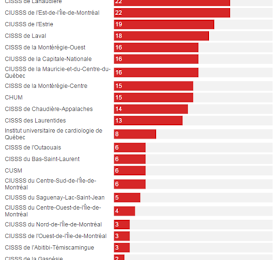A group of international scientists opened Pandora’s box this week with a new report arguing that it may be acceptable to genetically edit unborn babies’ DNA in certain circumstances.
According to Science magazine, the report came from an international committee organized by the U.S. National Academy of Sciences and the National Academy of Medicine in Washington, D.C.
The committee said more research needs to be done before a clinical trial could take place. It also
cautioned that DNA editing should only be done “for compelling reasons and under strict oversight,” according to the report it released Tuesday.
However, the new committee report is a significant deviation from previous recommendations in the scientific community that the practice is unethical and should be prohibited.
Marcy Darnovsky, executive director of the Center for Genetics and Society in Berkeley, California told the magazine: “We’re very disappointed with the report. It’s really a pretty dramatic shift from the existing and widespread agreement globally that human germline editing should be prohibited.”
Many are concerned that the practice eventually would lead to genetically modified “designer” babies, with parents choosing the hair and eye color, sex and other traits.
Click here to sign up for pro-life news alerts from LifeNews.com
Here’s more from the magazine:
… situations could be limited to couples who both have a serious genetic disease and for whom embryo editing is “really the last reasonable option” if they want to have a healthy biological child, says committee co-chair Alta Charo, a bioethicist at the University of Wisconsin in Madison.
Some researchers are pleased with the report, saying it is consistent with previous conclusions that safely altering the DNA of human eggs, sperm, or early embryos—known as germline editing—to create a baby could be possible eventually. “They have closed the door to the vast majority of germline applications and left it open for a very small, well-defined subset. That’s not unreasonable in my opinion,” says genome researcher Eric Lander of the Broad Institute in Cambridge, Massachusetts. Lander was among the organizers of an international summit at NAS in December 2015 who called for more discussion before proceeding with embryo editing.
Later, it continued:
The committee’s report finds that human embryo editing may be acceptable to prevent a baby from inheriting a serious genetic disease—but only if specific safety and ethical criteria are met. For example, the couple cannot have “reasonable alternatives,” such as the option of selecting healthy embryos for in vitro fertilization (IVF) or using prenatal testing and aborting a fetus with the disease. One situation that could meet the report’s criteria would be if both parents have the same disease, such as cystic fibrosis, that is caused by carrying two copies of a mutation, the report says. In that case, an embryo will also carry the harmful mutations.
The panel formed in response to new technology that makes it easier to edit human DNA, according to the magazine. The most well known is a DNA editing tool named CRISPR.
In 2015, pro-life bioethics author Rebecca Taylor wrote about CRISPR and its potential dangers.
“It really is time for the public to realize that the genetic engineering that they see in movies is quite possibly achievable, not in our grand-children’s lifetimes, but in our own,” she wrote. “It is time to stop ignoring the steady advance of genetic engineering and take charge of its direction.
“In the United States, this means we must get federal legislation on the books that addresses the genetic engineering of human beings, most importantly the genetic engineering of human embryos,” Taylor continued. “Unlike most other civilized countries in the world, we have no laws at the federal level governing the genetic manipulation of humans.”






